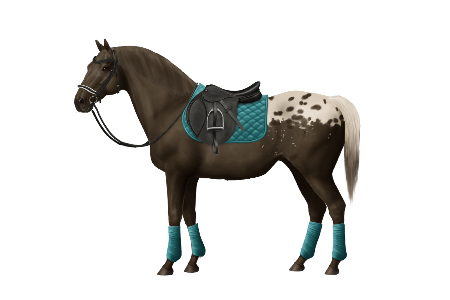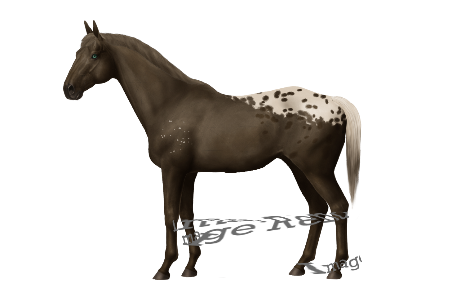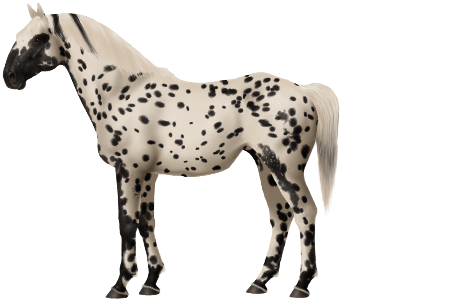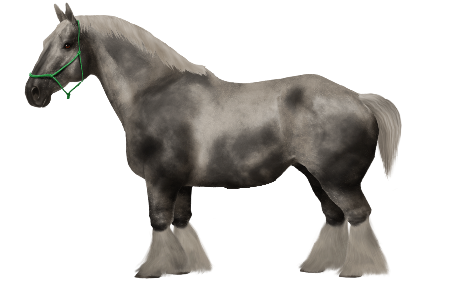Community Forum
Horse World Online
Breed horses and ponies, raise your foals, and train the next champion in this exciting and realistic online horse breeding game.
The new layout is in beta testing and we're inviting you to help us try it out! Click here to read the announcement post for details.
breeding problems
Forum rules
You can link to a horse using our new custom BBCode:
[horse=1234]Horses Name[/horse]
This will display the most recent photo of the horse as well as a link to him.
You can link to a horse using our new custom BBCode:
[horse=1234]Horses Name[/horse]
This will display the most recent photo of the horse as well as a link to him.
7 posts
• Page 1 of 1
-
davinbree
- Posts: 3
- Joined: Tue Aug 22, 2017 4:04 pm
- Visit My Farm
breeding problems
Post by davinbree »
so ive trying to breed black with blanket gypsy vanners that will not silver as they age but i dont know how to breed the silvering out please help
-
BlackOak2
- Premium

- Posts: 10572
- Joined: Sat Jan 30, 2016 12:41 am
- Visit My Farm
Re: breeding problems
Post by BlackOak2 »
The 'silvering' is known as Lp varnish (varnish roan, leopard varnish, leopard complex varnish), or just varnish.davinbree wrote:so ive trying to breed black with blanket gypsy vanners that will not silver as they age but i dont know how to breed the silvering out please help
Here is what we know about varnish on the game:
Varnish is controlled by 20 genes with 2 to 100 alleles each.
All horses will varnish roan (when also carrying the Lp switch), but expressions can be subtle to extreme (AC stock).
Varnish does not express itself at birth and will only show itself as the horse ages.
There hasn't yet been much study into varnish. If you want to find a varnish that expresses itself very slowly and very late, you'll have to locate through trial and error which AC breed is the carrier of this.
Usually I have some additional tidbits of information on what I've come across, but all I have to offer is that Shetlands and Tarpans seem to offer extreme varnishing.
At least you can start there and stay away from those two AC breeds.
As a final note, just because we know that 'all horses... from AC stock' will varnish roan, that doesn't mean that every horse carries the gene to varnish roan. It means that every breed in the AC can carry a varnish gene.
You'll have to cross your vanners out to AC stock until you find an offspring that doesn't varnish immediately, quickly or heavily. Check the stud ads and look for pedigree-pure, near AC or AC stock.
Good Luck!
-
Parsnip
- Posts: 120
- Joined: Tue May 31, 2016 10:21 pm
- Visit My Farm
Re: breeding problems
Post by Parsnip »
Try looking at older stallions - you'll be able to see how much they've varnished. And chestnut goes dark brown in older appys here. You might like it more than the grey.
-
davinbree
- Posts: 3
- Joined: Tue Aug 22, 2017 4:04 pm
- Visit My Farm
Re: breeding problems
Post by davinbree »
well, im trying to breed blackc and white vanners, due to that being their true colours in life and i cant seem to breed out the varnishing, i mean all of the horses i have that have white blanket varnish heavily, would breeding soling white and solid black vanners help me at all or would that be a waste of time?
ps. laymans terms when explaining genetics pretty please
ps. laymans terms when explaining genetics pretty please
-
BlackOak2
- Premium

- Posts: 10572
- Joined: Sat Jan 30, 2016 12:41 am
- Visit My Farm
Re: breeding problems
Post by BlackOak2 »
Let me see if I can get you some examples so you can follow. Actually, let me see if I can locate a couple studs that might be good trials and offer you insight from there.davinbree wrote:well, im trying to breed blackc and white vanners, due to that being their true colours in life and i cant seem to breed out the varnishing, i mean all of the horses i have that have white blanket varnish heavily, would breeding soling white and solid black vanners help me at all or would that be a waste of time?
ps. laymans terms when explaining genetics pretty please
First, since you want to stay with black, you'll want to avoid agouti and red (that's bay and chestnut). Red will hide any agouti genes, so if you choose a red coat, you'll likely breed in a bay or brown coat into your herd. You could always breed it back out, but if you can avoid it to begin with, then you can save yourself the trouble.
However, this may be extremely difficult because there simply isn't very many black-based, patterned horses on the market just yet.

This one is a cream carrier, which means some of your foals may come out as a palomino, or if you have cream in your lines there may be a chance of a cremello, or a smoky cream. He only has the image at 2, so you'll have to visit him to look at him, now at 14. I would consider this varnishing a medium varnish. He has no offspring right now, so what he'll offer into your herd is probably a mixture of quick varnish and his slower varnish.

Now if you compare it to this stallion, at 3 (just a few months older than the above stallion), this stud is showing very visually, a strong varnish already happening. This would be a stud that probably wouldn't do much for slowing down your herd's varnish.
Take a look at the spots you can see shining through the underlying coat. The hidden spots. Basically, the quicker you see them come out, the quicker the varnish will happen. There's only a couple months difference between these two studs, but you can see the second stud spots shining through much stronger than the first one.

This image is a great example of this. This was taken at just over a year old and you can already see the hidden spots clearly on the coat. This would be a stud you might want to stay away from, because the varnish is already appearing.

This stud may be appropriate for you.It's definitely hard to see the varnish from the full pattern, however you can easily see that the black areas left over (on the face specifically) is still mostly black, the other studs linked above are much more silver.

I was attempting to find another 'more appropriate' stud for you, but I didn't come across any. This is another example of what probably wouldn't work for you.
But if you look at his 3 year old picture:

It looks like he might be a slower varnishing horse. But as you can see, he is another heavy varnisher.
Take the time to look through these horse's pedigrees, their offspring (if they have any) and note when you can see the hidden spots begin to show up. The quicker and more pronounced those hidden spots appear, generally the more extreme the final varnish will be.
Once you feel like you start to understand what you're looking for, you can utilize this to locate which horses may offer weaker varnishing. Take a look at the shetlands in the AC and you'll be able to pick out which ones have the extreme varnish, at four years, these shetlands are already very loud with the varnish.
Does this make sense?
You could try to breed large white area, few spotted horses. This can be tricky, but this won't change the varnish. If you want to change the varnish, you'll need to focus on the varnish and finding a horse or a line of horses that already offers this. Or you can dive head-first into the AC market and trial-and-error until you find the one that weakens the strong varnish you already have.
-
davinbree
- Posts: 3
- Joined: Tue Aug 22, 2017 4:04 pm
- Visit My Farm
-
BlackOak2
- Premium

- Posts: 10572
- Joined: Sat Jan 30, 2016 12:41 am
- Visit My Farm
Re: breeding problems
Post by BlackOak2 »
If you get stuck again, don't hesitate to ask. Sometimes we're a little slow, but we have a good community that certainly tries to be helpful and amicable.davinbree wrote:that made so much sense, thank you so very much
7 posts
• Page 1 of 1
Return to “What Colour Is My Horse?”
Jump to
- General Discussion
- ↳ Announcements
- ↳ Weekly Development Updates
- ↳ General Chit Chat
- ↳ Contests
- ↳ What Colour Is My Horse?
- ↳ Comments and Suggestions
- ↳ Suggestions Archive
- ↳ Breeding Communities
- ↳ Farm Logs
- Marketplace
- ↳ Horses for Sale
- ↳ Stallions at Stud
- Knowledgebase & Guides
- ↳ Gameplay Questions & Help
- ↳ Guides & How To
- Technical
- ↳ Change Log v3
- Guest Discussions
- ↳ Public Questions & Answers
